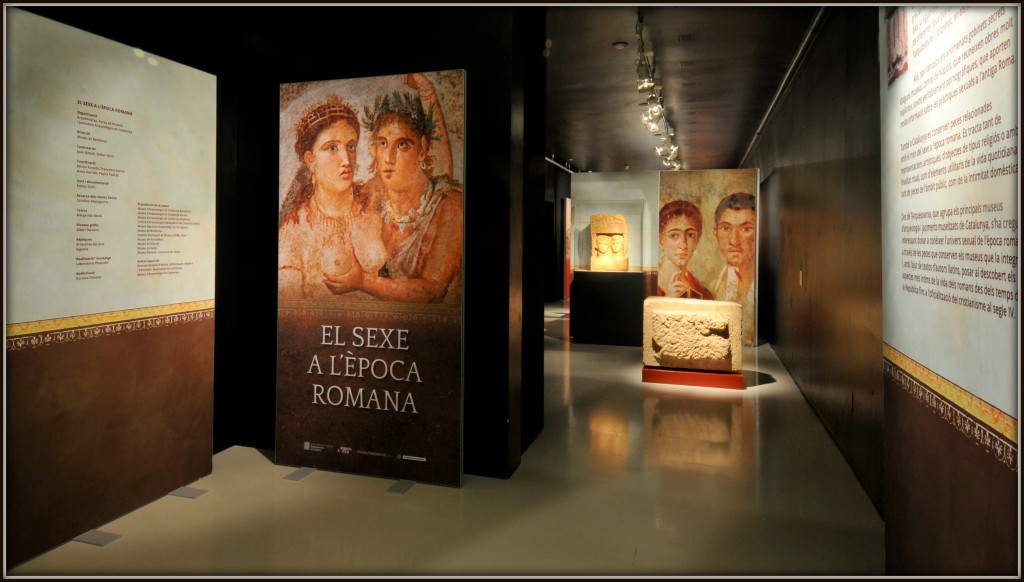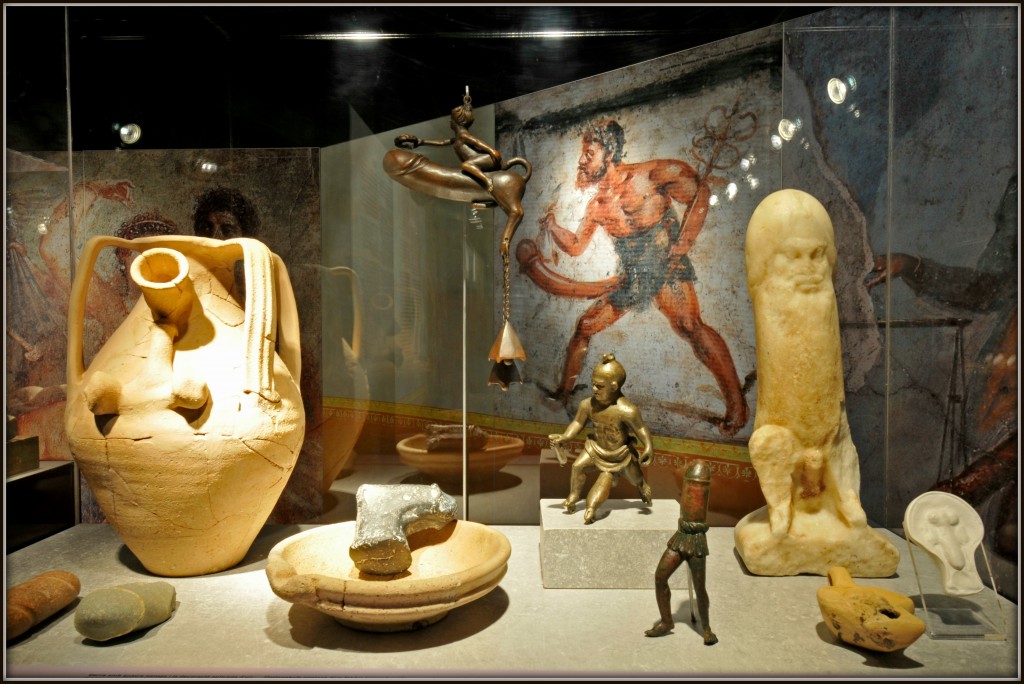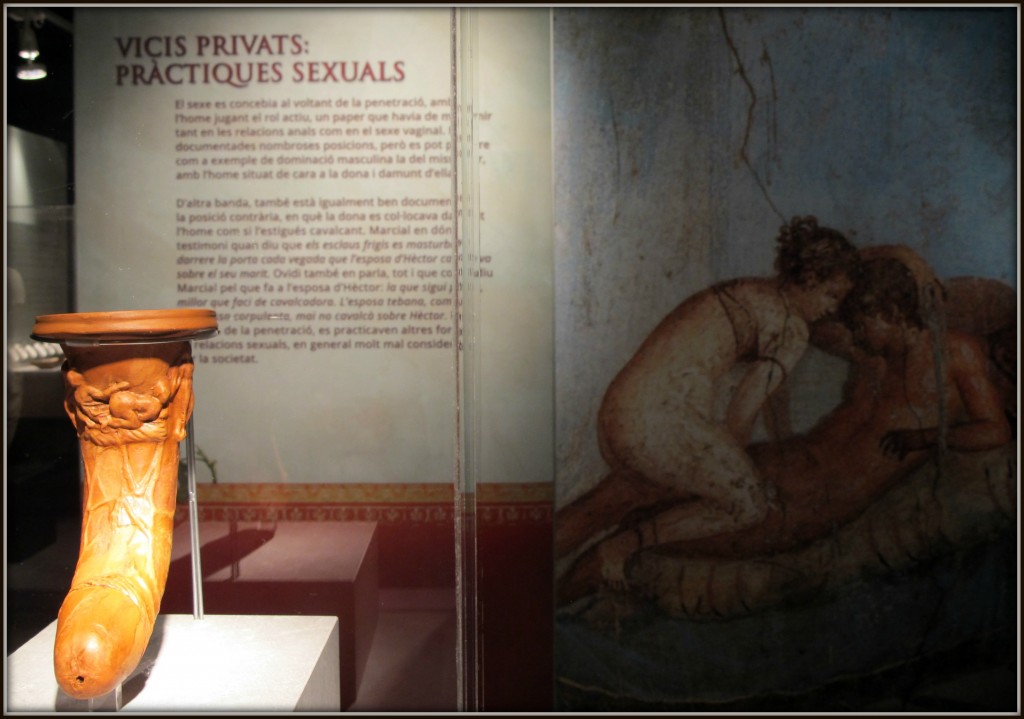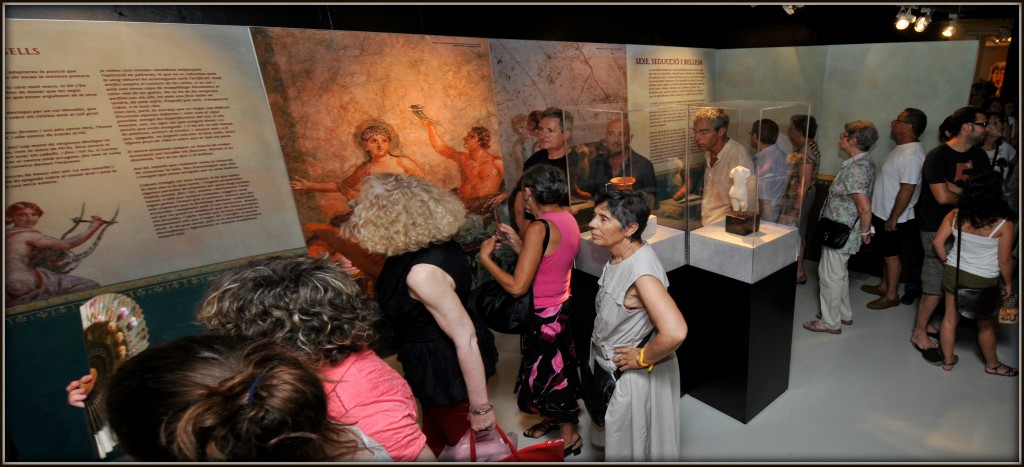The National Archaeological Museum of Tarragona (MNAT) brings us, until Septembre 29, ‘Sex in the Roman era’, an exhibit which gathers a number of objects of the Roman time that have been preserved in Catalan museums, besides pictorial reproductions and texts by Latin authors, like this one by Ovid:
“She who’s known for her face, lie there face upwards:
Let her back be seen, she who’s back delights. […]
Let a woman noted for her length of body,
press the bed with her knees, arch her neck slightly.
She who has youthful thighs, and faultless breasts,
The man might stand, she spread, with her body downwards.”.
And up to ten other undercurrents.
A quick incursion into ‘Sex in the Roman era’ allows visitors to confirm two things: first, the profound inequalities that would embrace both men and women back in that time; and second, the fact that sexual life has not changed that much since. Prostitution, adultery, heterosexuality, homosexuality… Quite a challenge to try and find the seven differences between ancient Romans and us.
The exhibition, available on both a free or guided tour (prior reservation), which is also complemented by a cycle of conferences, tells us about sex in marriage and adulterous relationships, the different ways of making love, the art of seduction, and love affairs, passions, transgressions, cheatings and disillusions which used to be part back then (in the same way they are now) of people’s sex relations.
The content of the showing does also demonstrate the uninhibited nature of the Romans, also under certain taboos and a double standard for morality. The exhibition is addressed to adults, and it is divided in five main fields: sex and marriage, dedicated to men-women relationships, and their evolution throughout history; sex, seduction and beauty, which talks about physical attraction and possible ways of seducing others; sexual practices, which describes several sexual habits documented by Roman society; divine sexuality, as the pretext that justifies human’s sexual life (Jupiter, Venus, Cupid, Hermaphrodite, Priapus and Bacchus had their seduction strategies, their sex affairs, and their cheatings and disillusions); and the adulterous relationships, which highlights the number of extramarital relationships, this being with either people of the same gender, prostitutes, or even, animals.
ACTIVITIES
Exhibition guided tours
Sunday, July 21, August 4 and 18, and September 1, 15 and 29, at 12am.
Addressed to general public (included in the price of the ticket).
Information and reservations: (0034) 977 251 515 / (0034) 977 236 209
mnat@gencat.cat / www.mnat.cat
Conferences
Wednesday, September 18, 2013
Love and sexuality in Rome
By Alfonso Cuatrecasas, Doctor in Classical Philology
Wednesday, September 25, 2013
Sex through classical texts
By Carolina Altolaguirre, Graduated in Classical Philology
Thursday, September 26, 2013
Cellae meretrices. Sex business in Pompey
By Joaquín Ruiz de Arbulo, Archaeology Lecturer for the URV
Conferences will take place in the ‘Sala d’Actes’ of the Museu Nacional Arqueològic de Tarragona (Plaça del Rei, 5), at 7pm.
Open house
Saturday, September 28
Sunday, August 18, and September 22 and 29
Exhibition’s schedule:
Tuesday to Saturday, 9.30am – 8.30pm
Sunday, 10am – 2pm
Monday, closed
National Archaeological Museum of Tarragona. Plaça del Rei, 5. 43003 Tarragona
Tel: (0034) 977 251 515 / (0034) 977 236 209
mnat@gencat.cat
www.mnat.cat
www.arqueoxarxa.cat
Text: Ivan Rodon (@irodon)
Translation: Artur Santos (@artur_1983)
Photos: MNAT
“El sexe a l’època romana” al MNAT from NotíciesTGN.tv on Vimeo.







